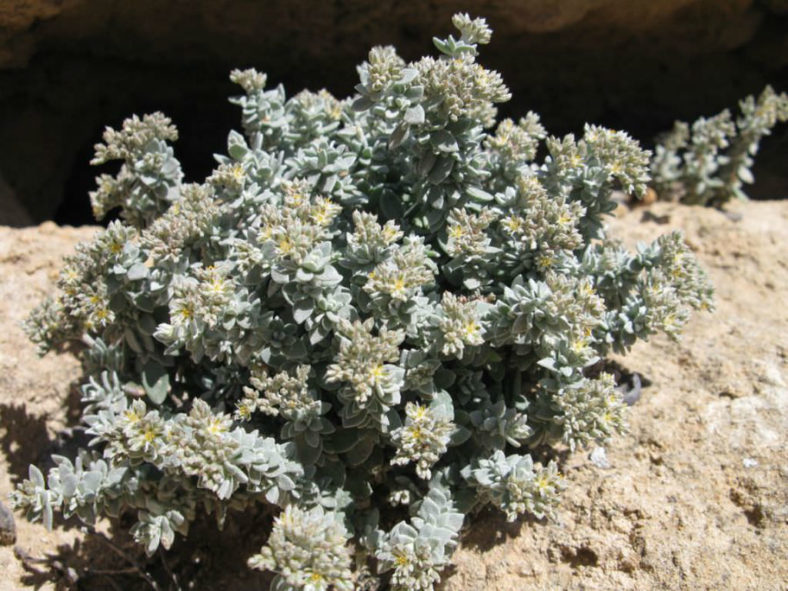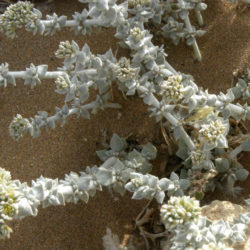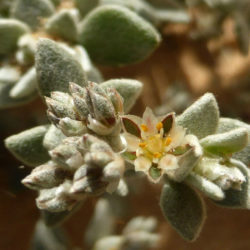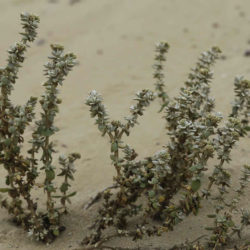Scientific Name
Polycarpaea nivea (Aiton) Webb
Common Name(s)
Common White Saladillo
Synonym(s)
Achyranthes nivea, Polycarpon niveum
Scientific Classification
Family: Caryophyllaceae
Genus: Polycarpaea
Description
Polycarpaea nivea is a dense succulent subshrub with short stems, often woody at the base, and strongly fleshy, silvery, or rarely brownish, densely hairy leaves with a pointed or rounded apex. The stems are erect or ascending and often much branched. Leaves are opposite or apparently whorled, linear to oblanceolate or ovate, with scarious stipules.
The flowers have five petals, shorter than the sepals, and appear in loose or compact terminal cymes.
Origin
Polycarpaea nivea is native to Mauritania, Morocco, Cape Verde, and the Canary Islands.
Etymology
The specific epithet "nivea (NIV-ee-uh)" means "snowy, snow-white" and refers to the color of the leaves.

Hardiness
USDA hardiness zone 8a to 10b: from 10 °F (−12.2 °C) to 40 °F (+4.4 °C).
How to Grow and Care
It is a coastal xerophyte, growing in extremely arid to arid areas of several islands. It is typically on more or less compacted dunes close to the sea but also coastal cliffs and stony coastal plains. It is also found in sub-humid to humid mountain areas. In the Canary Islands, it forms psammophyte communities with Convolvulus caput-medusae and Heliotropium bacciferum ssp. erosum, Zygophyllum fontanesii, and Euphorbia paralias.
It is a low-growing, grey hairy plant seldom seen in cultivation. However, it has been used extensively and successfully in sand-binding experiments on dunes.
See more at How to Grow and Care for Polycarpaea nivea.
Links
- Back to genus Polycarpaea
- Succupedia: Browse succulents by Scientific Name, Common Name, Genus, Family, USDA Hardiness Zone, Origin, or cacti by Genus
Photo Gallery
Click on a photo to see a larger version.


